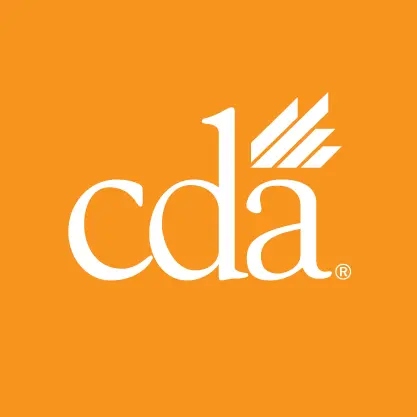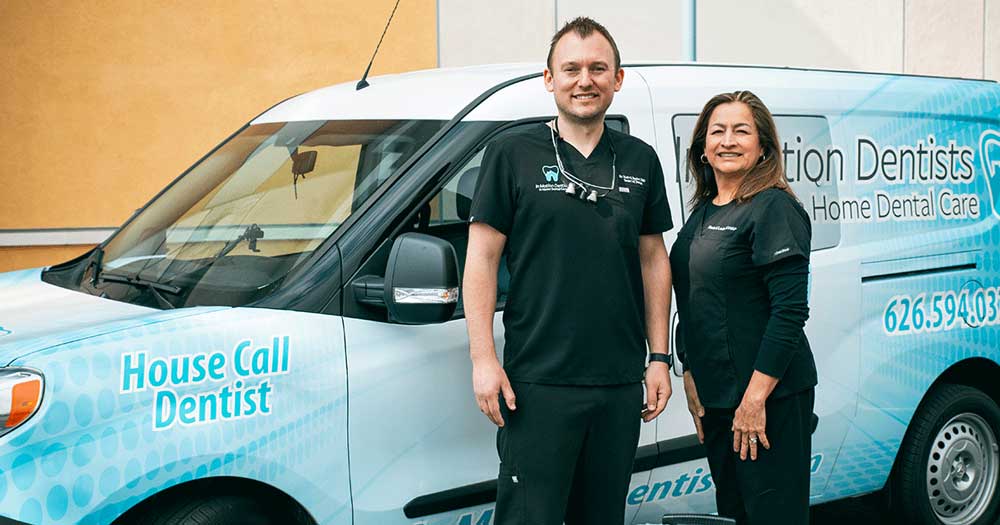Maria Ladd can cite many examples of good patient outcomes from her eight years and counting as a registered dental hygienist in alternative practice, but she has a couple of favorites. One involves a first-time patient, age 80, who resided in an assisted living center. The patient’s daughter had contacted Ladd to request a teeth cleaning on her mother’s behalf.
Ladd performed a full charting and risk assessment and, observing a deep pocket, took a couple of X-rays, which she then sent — encrypted — to Wade Banner, DMD, a mobile dentist and the owner of In Motion Dentists serving Los Angeles and Orange counties. The very next day, Dr. Banner was at the patient’s bedside to treat two abscesses. “He looked at those X-rays and immediately said, ‘I need to see that patient,’” Ladd said.
“You saved my mother’s life,” Ladd recalled the patient’s daughter later telling her.
Ladd had already been working as a registered dental hygienist for 19 years when she decided to pursue the RDHAP license through the University of the Pacific, Arthur A. Dugoni School of Dentistry’s program. She did so in part because she considers herself an active learner, who’d been in a traditional setting for years and was ready to try something different. But she also recognized a growing need for the mobile RDHAP, particularly among an aging population. Working in a traditional practice, she observed patients who were developing Alzheimer’s disease, Parkinson’s disease and mobility challenges who not only needed more time to receive services but would eventually require transportation and other accommodations to receive care in a traditional dental office.
Rather than allowing these patients to drop off the appointment schedule, Ladd said she and other RDHAPs are able to step in to continue the patient’s oral health care.
“I have bridged that gap for these patients,” said Ladd, who hears frequently from grateful family members who are surprised that she can do exactly what she would do in a dental office, only in a mobile capacity.
Banner’s experience echoes Ladd’s.
“For the RDHAPs I work with, a major focus is caring for patients with some type of disability — whether physical or intellectual. The RDHAP really fills a huge void in that population, visiting patients in memory care or skilled nursing facilities or in their homes,” said Banner, who has worked with Ladd since 2014.
Having an RDHAP ‘in the pocket’
Some of Ladd’s patients might only receive a cleaning and perhaps oral health education, but Ladd always travels with X-ray equipment for use when warranted. Sometimes, Banner with Ladd’s assistance will conduct a teledentistry exam. But Ladd always uses her full hygienist’s skill set and takes detailed descriptive notes. When she finds something significant during an initial assessment, Banner will visit the patient soon afterward to provide the necessary care.
Because Banner and his three associates work exclusively in a mobile capacity, they refer patients to RDHAPs regularly. But Banner said the need for RDHAPs extends to the traditional practice setting, as well.
“Just as a general dentist has an oral surgeon or an endodontist to refer patients to, having an RDHAP in the pocket to refer for preventive services is really helpful. That hygienist can keep an eye on the patient’s oral health and ensure the mouth is staying healthy. The dentist will then take care of the periodic oral exams and restorative treatment as needed.”
Every RDHAP is required to have a “dentist of record” on file with the Dental Hygiene Committee of California to obtain the RDHAP license. The RDHAP can provide hygiene services to patients independently for 18 months. By state regulation, after 18 months, the RDHAP can continue to see the patient only with a dentist’s written prescription. Ladd sees some patients as frequently as every two or three months. “That is because these patients lack the ability to perform self-care, and many caregivers aren’t trained to perform the oral care or are apprehensive about doing so,” Ladd said.
But Banner stressed that general dentists should not be concerned about competition or that RDHAPs are taking some of their patient pool.
“That’s not what has happened,” Banner said. “From working with 12-plus RDHAPs over the last five years, none are seeing patients who are completely capable of being seen in the traditional dental office.”
Ladd said another thing she’s learned over her years as an RDHAP is that she can really take her time with the patients who require it. She spoke of another patient — a young man with cerebral palsy — who for years had received general anesthesia for teeth cleanings. His mother heard about Ladd’s services and contacted her in hopes she might be able to clean her son’s teeth at their home, without sedation.
“It was no problem,” Ladd said. And when Banner sees him, he is able to do all of the patient’s restorative work. “Having noticed occlusal wear from bruxing, Dr. Banner even made him a special night guard that has a little handle on it that his mom can use to insert and remove it,” Ladd said.
Ladd, like Banner, covers a large geographical area. But she also maintains a schedule in a traditional practice ― working for Gerald Roodzant, DDS, in the city of La Mirada. It was Dr. Roodzant whom Ladd first informed, back in 2011, that she was interested in taking the required courses to become an RDHAP. His response was overwhelmingly encouraging.
“Go for it!” Ladd, laughing, remembered him telling her. “You should!”
Roodzant did not dispute Ladd’s account. He added that as his busy practice approaches its 40-year anniversary, they are seeing many elderly and special-needs patients who require not only hygiene services but also triage for restorative issues such as senile caries.
“To have a knowledgeable clinician who can provide interim services while the patient is in the hygiene chair is a huge benefit to the less-mobile patient as well as the practice,” Roodzant said. “And to be able to transition these patients to in-home care when needed is a comfort for them and myself.”
An RDHAP’s work is not without challenges, among which, according to Ladd, are organization, time-management and low or no reimbursement from insurance companies for the home visit. “And then, you’ve worked eight-plus hours and you come home and you’re doing billing,” Ladd said. The job can be physically taxing, but staying in shape helps her work in the occasionally awkward positions — leaning over a bed, for example.
Ladd did give a nod to today’s higher Denti-Cal reimbursement rate, stating that it’s even higher than some of the PPO rates, which helps to sustain her in her practice. Most of all, however, it’s the satisfaction of reaching patients who maybe haven’t had treatment in years and hearing from appreciative caregivers that keeps her going.
“To me, dentistry is dentistry, and we all have a goal to treat disease process and to make people smile,” Ladd said.
Connecting with an RDHAP today
There are approximately 765 licensed RDHAPs in California. Dentists who are interested in working with an RDHAP can visit the RDHAP Connect website (rdhapconnect.com) to find an RDHAP in their area on the California map. That website also provides background and FAQ related to the RDHAP. The California Dental Hygienists’ Association website has an RDHAP resource page and, additionally, many RDHAPs have their own websites that can be found through an internet search.
Ladd said she’d love to see dentists work more with RDHAPs to help them get up and running. “Not to cover education expenses or employ them,” she clarified, “but to help them get the tools they need.” She said partnering with an RDHAP in a business model that incorporates teledentistry, for example, supports the two professionals working together to bridge the gap.
For his part, Banner would like to see more dentists working with RDHAPs.
“I want them to be successful in what they do,” he said. “For themselves and the patients but also because working with them has allowed me to grow my practice and serve more patients.”
Visit rdhapconnect.com to find an RDHAP in your area.

